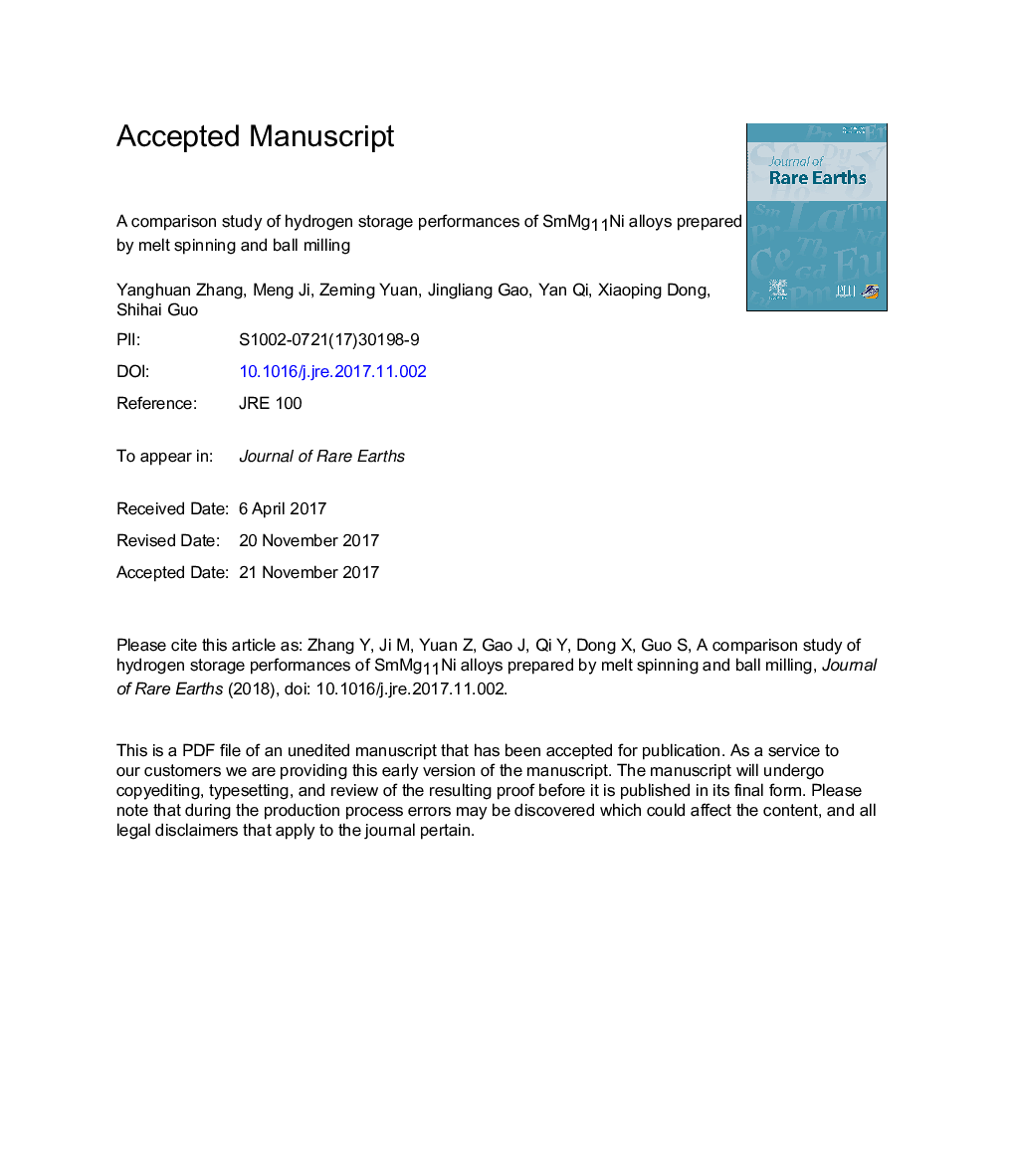| Article ID | Journal | Published Year | Pages | File Type |
|---|---|---|---|---|
| 7696815 | Journal of Rare Earths | 2018 | 15 Pages |
Abstract
The melt spinning (MS) and ball milling (BM) technologies are thought to be efficient to prepare nanostructured Mg and Mg-based alloys for improving their hydrogen storage performances. In this paper, two technologies, viz. melt spinning and ball milling, were employed to fabricate the SmMg11Ni alloy. The structure and hydrogen storage performance of these two kinds of alloys were researched in detail. The results reveal that the as-spun and milled alloys both contain nanocrystalline and amorphous structures. By means of the measurement of PCT curves, the thermodynamic parameters of the alloys prepared by MS and BM are ÎHMS(des)Â =Â 82.51Â kJ/mol and ÎHBM(des)Â =Â 81.68Â kJ/mol, respectively, viz. ÎHMS(des)Â >Â ÎHBM(des). The as-milled alloy shows a larger hydrogen absorption capacity as compared with the as-spun one. The as-milled alloy exhibits lower onset hydrogen desorption temperature than the as-spun one. As to the as-milled and spun alloys, the onset hydrogen desorption temperatures are 557.6 and 565.3Â K, respectively. Additionally, the as-milled alloy shows a superior hydrogen desorption property than the as-spun one. On the basis of time that required by desorbing hydrogen of 3Â wt% H2, the as-milled alloy needs 1488, 574, 390 and 192Â s corresponding to hydrogen desorption temperatures 593, 613, 633 and 653Â K, while the as-spun alloy needs 3600, 1020, 778 and 306Â s corresponding to the same temperatures. The dehydrogenation activation energies of the as-milled and spun alloys are 100.31 and 105.56Â kJ/mol, respectively, the difference of which is responsible for the much faster dehydriding rate of the as-milled alloy.
Related Topics
Physical Sciences and Engineering
Chemistry
Chemistry (General)
Authors
Yanghuan Zhang, Meng Ji, Zeming Yuan, Jingliang Gao, Yan Qi, Xiaoping Dong, Shihai Guo,
